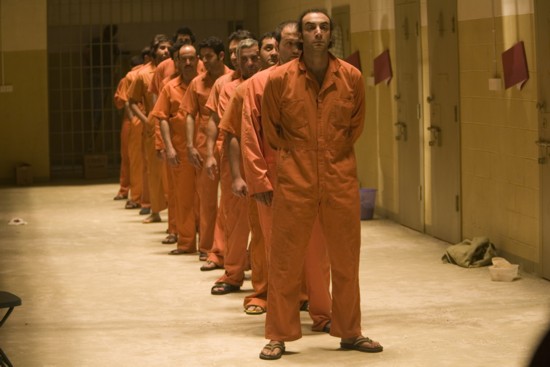|
Reviews of Recent Independent, Foreign, & Documentary Films in Theaters and DVD/Home Video
STANDARD OPERATING PROCEDURE
Morris has also called his new film a "non-fiction horror movie," very much like how 1988’s The Thin Blue Line was a “non-fiction film-noir.” Both involve a lot of investigating – Morris, by the way, is an ex-p.i. – but where the first film was more small scale and eventually had the unlikely happy ending of a man getting off death row, SOP doesn’t have such a resolution. Some of the backroom abuses (more forms of torture) were not caught on camera by the perpetrators, which makes what evidence that is available and the on-camera testimony all the more intriguing and devastating, with enough ghastly imagery to shake the bejesus out of viewers who think they know all about the scandal, which came and, apparently, went in 2004. Although as a look at the state of the military in wartime, it’s a flipside to The Fog of War. Instead of the top brass, it examines those on the bottom of the chain of command. The stark facts come straight out of the horses’ mouths – Janis Karpinski, Lynndie England, Javal S. Davis, Sabrina Harman, among several others – who recount in nearly pornographic description (definitely no pun intended) the abuse on prisoners. They pull no punches in describing what some, even today, describe as “humiliation, not torture” of the detainees, and how deliberate many of the photo set-ups were. Somewhat surprising is to see that the infamous photo of the hooded Iraqi standing atop the boxes with electrodes on his fingers was pretty much a photo op and later labeled as a “SOP” image, and not a criminal act, by military officials. In the reenactments, we see what Tim Dugan, a contract interrogator, said he saw in Abu Ghraib: “The big word that comes for me is surreal.” We get flashes of recreated images via the unmistakable framing and lighting of DP Robert Richardson (which, not without some coincidence, reminds one of his audacious work on JFK): the extreme, blurry close-up of a thigh, ants crawling all over a prisoner, barking guard dogs, and the destruction of evidence by soldiers when the scandal first broke. The film isn’t simply the work of a great documentary director but a great visionary, one who supplants what one imagines with even more ghoulish imagery.
And as for the most recent documentary feature and Oscar winner, Taxi to the Dark Side, the comparisons are by and large based on scope and the
drastic differences in directorial approach. Alex Gibney’s film goes beyond Abu Ghraib, indicting the White House for the abuses more so than Morris,
who offers a second stage of analysis. He not only comments on the events themselves, but by reenacting the events, he offers a whole
other vantage point.
Jack Gattanella
DVD Extras: The mystery remains. According to Morris’s articulate commentary, “There isn’t any one reason for the photos being taken.” He also offers one interesting theory: that Bush won the 2004 election because the Abu Ghraib “bad apples” gave the electorate a target to blame, and not the administration. And for any who may have been distracted by the reenactments, there’s a reason Morris chose a slo-mo camera shooting 1000 frames a second for many of them; it was the closest to both still and live-action photography. However, he
offers nothing on how he was able to get the indicted to appear on
camera. (Harmon and England are candid though clearly uncomfortable.)
The exception is civilian interrogator Tim Dugan, who Morris describes
as the most difficult interview. Before consenting, Dugan turned the
tables, asking Morris if he feels smarter than the people he interviews.
Kent Turner
|


